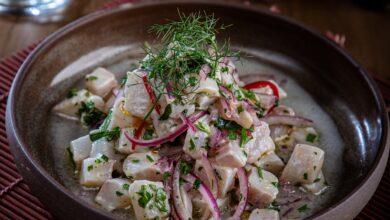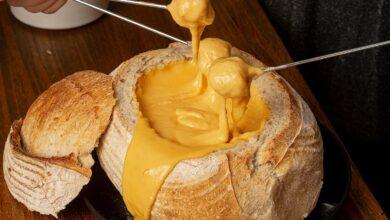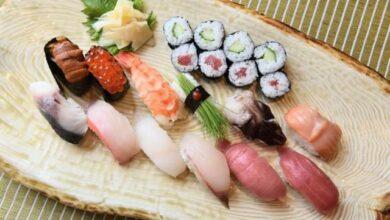🍽️ Exploring the Culinary Delights of Paris: A Guide to French Cuisine 🇫🇷
Savor the Essence of Parisian Gastronomy with Our French Cuisine Guide

Introduction
Paris, often referred to as the “City of Light,” is a place that beckons travelers from around the world with its rich history, stunning architecture, and, of course, its unparalleled culinary delights. French cuisine, renowned globally for its sophistication and flavor, has a special place in the hearts of food connoisseurs.
In this guide, we’ll embark on a delectable journey through the gastronomic wonders of Paris, exploring classic French dishes, iconic Parisian cafés, Michelin-starred excellence, food markets, wine and cheese pairings, street food, dining etiquette, and even the opportunity to immerse yourself in French cooking with cooking classes and culinary tours. Get ready to indulge your senses and discover the true essence of French cuisine right here in the heart of Paris.
The Classic French Dishes
1. Croissant and Pain au Chocolat
When it comes to classic French pastries, the Croissant and Pain au Chocolat are two delectable treats that have gained international fame. These flaky and buttery delights have become synonymous with French breakfast culture and are beloved by people around the world.
The Croissant, with its crescent shape and layers of delicate pastry, is a true work of art. It originated in Austria but was perfected by the French. A good croissant should be crispy on the outside while remaining soft and airy on the inside. Its rich, buttery flavor is enough to transport your taste buds to the streets of Paris.
Pain au Chocolat, often referred to as a chocolate croissant, takes the croissant to the next level. This pastry is typically filled with a strip of high-quality chocolate that melts into a gooey, chocolatey center when baked. It’s a delightful combination of buttery pastry and luscious chocolate that’s hard to resist.
These two pastries are not only a staple of French breakfasts but are also enjoyed as a snack or dessert throughout the day. Whether you’re sipping a café au lait at a charming Parisian café or enjoying them at home, Croissants and Pain au Chocolat are sure to satisfy your cravings for a taste of France.
2. Coq au Vin
Coq au Vin is a timeless classic in French cuisine, celebrated for its rich flavors and comforting appeal. This traditional dish translates to “rooster in wine” and is a testament to the French art of slow-cooking.
At its heart, Coq au Vin consists of tender chicken pieces, typically from a mature rooster, slow-cooked in red wine along with mushrooms, onions, bacon (lardons), and aromatic herbs. The slow simmering in red wine imparts a deep, robust flavor to the dish, while the bacon adds a smoky and savory touch. The combination of wine, herbs, and slow-cooked ingredients creates a mouthwatering sauce that envelops the chicken.
Coq au Vin is often served with a side of buttery mashed potatoes or crusty French bread to soak up every last bit of the sumptuous sauce. It’s a hearty and rustic dish that warms the soul and evokes images of cozy French countryside kitchens.
3. Escargot
Escargot, or snails, may not be everyone’s first choice when it comes to culinary adventures, but in French cuisine, they are considered a delicacy and have been enjoyed for centuries. These slow-moving creatures are transformed into a gourmet treat through careful preparation and a delectable garlic and herb butter sauce.
To prepare escargot, the snails are removed from their shells, cleaned, and then cooked in a mixture of butter, garlic, shallots, and fresh herbs. The resulting dish is rich, aromatic, and surprisingly tender. It’s typically served in the snail shells or specialized escargot dishes, making for an elegant presentation.
Escargot may not be an everyday indulgence, but it’s an essential experience for anyone looking to explore the full spectrum of French cuisine. So, if you’re feeling adventurous and want to savor a taste of France, give escargot a try.
4. Ratatouille
Ratatouille is a delightful Provençal vegetable stew that has become a beloved classic in French cuisine. This dish is a true celebration of the Mediterranean flavors and the art of simplicity in cooking.
The base of Ratatouille consists of tomatoes, zucchini, eggplant, bell peppers, onions, and garlic, all stewed together in olive oil with a medley of herbs such as thyme, basil, and oregano. The result is a harmonious blend of flavors and textures, with the vegetables softened but still maintaining their distinct characteristics.
Ratatouille can be enjoyed as a side dish, served with crusty bread, or as a main course. It’s a versatile dish that can be served hot or at room temperature, making it perfect for picnics and gatherings. Additionally, it’s a vegetarian-friendly option that appeals to a wide range of palates.
5. Beef Bourguignon
Beef Bourguignon, also known as Beef Burgundy, is a classic French stew that embodies the essence of French comfort food. This hearty dish hails from the Burgundy region of France and is renowned for its deep, rich flavors.
At its core, Beef Bourguignon consists of tender chunks of beef, typically from the tougher cuts like chuck or stewing meat, braised to perfection in red wine. The wine imparts a deep, earthy flavor to the dish, and when combined with aromatics like onions, carrots, and garlic, it creates a luscious and savory sauce.
Mushrooms and bacon (lardons) are often added to the stew, adding layers of umami and smokiness. The dish is slow-cooked to allow the flavors to meld together, resulting in melt-in-your-mouth beef and a velvety sauce.
Beef Bourguignon is traditionally served with creamy mashed potatoes or crusty bread to soak up the delectable sauce. It’s a dish that warms the soul and has a timeless appeal, making it a favorite in French cuisine and beyond. Whether enjoyed at a rustic countryside inn or in the comfort of your own home, Beef Bourguignon is a taste of France that’s hard to resist.

Iconic Parisian Cafés
-
Le Café de Flore
Le Café de Flore is an iconic Parisian café located in the heart of the Saint-Germain-des-Prés neighborhood. Established in the 1880s, it has a rich history as a gathering place for intellectuals, writers, and artists. The café’s name is derived from a statue of the goddess Flora, which once stood nearby.
This historic café is renowned for its classic Art Deco interior, complete with mirrored walls, red banquettes, and brass accents. It exudes an ambiance of timeless elegance that transports patrons back to the heyday of Parisian intellectual life.
One of the highlights of Le Café de Flore is its coffee, which is expertly brewed and served with a side of sophistication. Patrons can also enjoy a selection of pastries and light meals while savoring the café’s intellectual atmosphere.
-
Les Deux Magots
Les Deux Magots is another legendary café located in the same Saint-Germain-des-Prés district as Café de Flore. It shares a similar history as a hub for intellectuals, including famous figures like Jean-Paul Sartre and Simone de Beauvoir. The café’s name refers to two Chinese figurines that once adorned the premises.
The interior of Les Deux Magots is a blend of traditional and modern elements, featuring plush seating, wood-paneled walls, and a captivating ambiance. The café’s outdoor terrace is a prime spot for people-watching in one of Paris’s most fashionable neighborhoods.
When visiting Les Deux Magots, you can enjoy a range of coffees, teas, and alcoholic beverages. The menu also includes a variety of French pastries and light meals. It’s a place where history, culture, and culinary delights converge.
-
Café de la Paix
Café de la Paix is a Parisian institution situated near the Opéra Garnier and the Place de l’Opéra. This grand café opened its doors in 1862 and has been a favorite haunt for Parisians and visitors ever since.
The café is renowned for its opulent Belle Époque décor, featuring chandeliers, gilded mirrors, and plush seating. Its prime location makes it a fantastic spot for pre-theater or post-shopping refreshments.
Café de la Paix offers a diverse menu, including an array of hot and cold beverages, pastries, and savory dishes. The café is known for its afternoon tea service, providing an exquisite experience in a truly Parisian setting.
-
La Maison Angelina
While not a traditional café in the sense of the others mentioned, La Maison Angelina is a renowned tearoom and patisserie that holds a special place in the hearts of Parisians and tourists alike. Established in 1903, it has been enchanting visitors with its world-famous hot chocolate and pastries.
The interior of La Maison Angelina is a vision of Belle Époque elegance, with marble tabletops, mirrored walls, and a distinct sense of refinement. It’s an ideal place to indulge in sumptuous desserts and decadent hot chocolate.
Angelina is especially famous for its “African” hot chocolate, which is thick, rich, and utterly divine. Pair it with one of their exquisite pastries, like the Mont Blanc, for a truly indulgent experience.
These iconic Parisian cafés each offer a unique glimpse into the city’s rich history and cultural tapestry, making them essential stops for anyone seeking an authentic taste of Paris. Whether you’re in search of intellectual inspiration, a leisurely coffee, or a sweet indulgence, these establishments have you covered.
Michelin-Starred Excellence
→ Introduction to the Michelin Guide
The Michelin Guide, often referred to simply as the Michelin Red Guide, is one of the most prestigious and influential culinary guides in the world. Originating from France, it was first published by the Michelin tire company in 1900 as a means to promote automobile travel and encourage people to explore new destinations. Over the years, it has evolved into the go-to resource for discerning food enthusiasts seeking exceptional dining experiences.
The guide employs a unique rating system involving Michelin stars, which are awarded to restaurants based on the quality and creativity of their cuisine. The Michelin stars range from one to three, with three stars signifying the highest level of excellence. Inspectors, often anonymous, rigorously assess restaurants on criteria such as the quality of ingredients, culinary techniques, presentation, and consistency.
In addition to Michelin stars, the guide also includes Bib Gourmand awards, which recognize more affordable restaurants offering excellent value for money, and special awards for outstanding chefs and culinary achievements.
→ Top Michelin-starred restaurants in Paris
Paris, often regarded as the culinary capital of the world, boasts an impressive array of Michelin-starred restaurants that cater to a wide range of tastes and preferences. Here are a few of the city’s top Michelin-starred establishments:
- Guy Savoy (3 Michelin stars): Located near the Seine, Guy Savoy offers an exquisite dining experience with a focus on contemporary French cuisine. Signature dishes like the artichoke and black truffle soup have earned it its three stars.
- Le Jules Verne (1 Michelin star): Perched high on the Eiffel Tower, Le Jules Verne combines gourmet cuisine with breathtaking views of Paris. It’s a destination for special occasions and romantic dinners.
- L’Ambroisie (3 Michelin stars): Situated on Île Saint-Louis, L’Ambroisie is a gastronomic masterpiece known for its impeccable service and meticulously crafted dishes. It’s a pinnacle of French fine dining.
- Arpège (3 Michelin stars): Renowned chef Alain Passard’s Arpège is celebrated for its vegetable-focused cuisine, with ingredients sourced from his own gardens. It’s a testament to creativity and sustainability.
- Le Meurice (3 Michelin stars): Located within the iconic Le Meurice hotel, this restaurant under the guidance of chef Alain Ducasse offers an opulent dining experience featuring modern French cuisine.
These are just a handful of the many Michelin-starred restaurants that grace the streets of Paris. Each offers a unique culinary journey, blending tradition with innovation and showcasing the diverse flavors of French cuisine.
→ Dining experience at a Michelin-starred restaurant
Dining at a Michelin-starred restaurant is not just about food; it’s an immersive experience that combines culinary artistry, impeccable service, and a carefully curated atmosphere. Here’s what you can expect when you indulge in a Michelin-starred dining experience:
1. Exceptional Cuisine: The heart of the experience is, of course, the food. Michelin-starred restaurants are known for their innovative and expertly crafted dishes. Chefs often push the boundaries of creativity while maintaining a deep respect for culinary traditions.
2. Impeccable Service: Service at these establishments is characterized by attentiveness, knowledge, and a keen eye for detail. Servers are well-versed in the menu and can guide you through the dining experience, from selecting dishes to wine pairings.
3. Ambiance: Michelin-starred restaurants pay careful attention to the ambiance, creating an atmosphere that complements the cuisine. Whether it’s a contemporary urban setting or a historic dining room, the surroundings enhance the overall experience.
4. Tasting Menus: Many Michelin-starred restaurants offer tasting menus that allow you to sample a variety of dishes, often paired with wines chosen to enhance the flavors. These menus provide an opportunity to savor a range of flavors and culinary techniques.
5. Attention to Detail: Every aspect of your dining experience is thoughtfully considered, from the presentation of each course to the selection of tableware and glassware. Even the timing of each dish’s arrival is carefully orchestrated.
6. Memorable Moments: Dining at a Michelin-starred restaurant is a special occasion. It’s an opportunity to create lasting memories, making it an ideal choice for celebrations, proposals, or simply a memorable night out.
While Michelin-starred dining can be a splurge, it’s an experience that offers a glimpse into the world of culinary artistry and gastronomic excellence. Whether you’re a devoted foodie or simply looking to celebrate a special moment, a visit to a Michelin-starred restaurant is an unforgettable adventure for the senses.
Cooking Classes and Culinary Tours
Hands-on Cooking Classes in Paris
Paris, often considered the epicenter of culinary excellence, offers an array of hands-on cooking classes that provide food enthusiasts with the opportunity to immerse themselves in the art of French cuisine. Whether you’re a novice cook or a seasoned foodie, these classes offer a unique and enriching experience:
- Le Cordon Bleu: As one of the world’s most prestigious culinary schools, Le Cordon Bleu in Paris offers a range of cooking classes for amateurs. Here, you can learn the techniques behind classic French dishes, from mastering pastry to perfecting the art of sauces.
- La Cuisine Paris: Located in the heart of the city, La Cuisine Paris offers a variety of cooking classes that cater to different skill levels. You can learn to make iconic French pastries, such as croissants and macarons, or delve into savory dishes like coq au vin.
- Atelier des Sens: With a focus on creativity and innovation, Atelier des Sens offers cooking classes that encourage participants to experiment with flavors and techniques. This is a great option for those looking to add a modern twist to traditional French cuisine.
- L’École de Cuisine Alain Ducasse: Led by the legendary chef Alain Ducasse, this culinary school offers a range of classes, from short workshops to intensive programs. Learn from the best and gain insights into the world of Michelin-starred cuisine.
- Cook’n with Class: Offering a friendly and approachable atmosphere, Cook’n with Class provides a range of classes for all skill levels. From French bread baking to wine and cheese pairing, there’s something for everyone.
Taking a cooking class in Paris is not just about learning to cook; it’s about experiencing the culture, history, and traditions of French cuisine firsthand. You’ll have the chance to shop for fresh ingredients at local markets, work with skilled chefs, and enjoy the fruits of your labor in a convivial setting.
Guided Culinary Tours for Food Enthusiasts
For food enthusiasts eager to explore the vibrant culinary scene of Paris beyond the kitchen, guided culinary tours offer an exciting opportunity to taste and discover the city’s gastronomic treasures:
- Paris Food Tours: Several companies offer guided food tours in Paris that take you through diverse neighborhoods, allowing you to sample a wide range of French delicacies. These tours often include stops at local markets, bakeries, cheese shops, and cafés.
- Chocolate and Pastry Tours: Paris is famous for its delectable chocolates and pastries. Guided tours focusing on these sweet delights will take you to the finest chocolatiers and patisseries, where you can savor pralines, truffles, croissants, and éclairs.
- Wine Tasting Tours: France is renowned for its wines, and Paris boasts exceptional wine bars and cellars. Wine tasting tours give you the chance to explore the city’s wine culture, learn about French winemaking, and savor a selection of fine wines.
- Market Tours: Join a local guide on a market tour to discover the freshest produce, meats, and cheeses that Parisian markets have to offer. You can then enjoy a cooking class with your market finds or simply savor a picnic in a picturesque park.
- Culinary Walking Tours: These tours combine the joy of exploring Paris’s neighborhoods with culinary adventures. You’ll stroll through charming streets while sampling gourmet delights and learning about the city’s food history.
- Cheese Tasting Tours: France is synonymous with exceptional cheeses. Guided cheese tasting tours introduce you to a variety of artisanal cheeses and provide insights into the art of cheese pairing.
Participating in a guided culinary tour in Paris is not only a gastronomic adventure but also a cultural journey. You’ll gain a deeper understanding of French culinary traditions, discover hidden culinary gems, and create unforgettable memories while indulging in some of the finest food and beverages the city has to offer.
FAQs
Q: What is the best time to visit Paris for a culinary adventure?
A: Paris is a year-round culinary destination, but spring and fall offer pleasant weather and fewer crowds, making it ideal for food exploration.
Q: Are vegetarian options readily available in Paris?
A: Yes, Paris has a growing vegetarian and vegan scene. Many restaurants offer delicious plant-based dishes.
Q: Can I experience French cuisine on a budget?
A: Absolutely! Paris has numerous affordable eateries, such as local bakeries and creperies, where you can savor authentic French flavors without breaking the bank.
Q: Is it customary to tip in Parisian restaurants?
A: Yes, it’s customary to leave a 10-15% tip in restaurants. However, check your bill, as some establishments include service charges.
Q: What should I try if I’m a first-time visitor to Paris?
A: Start with classics like croissants, escargot, and crepes. These iconic dishes offer a great introduction to French cuisine.
Q: Can you recommend a hidden gem for foodies in Paris?
A: Le Marché des Enfants Rouges is a hidden gem, offering diverse international cuisines, fresh produce, and a charming atmosphere.
Conclusion
As we wrap up our culinary journey through the enchanting streets of Paris, we hope you’ve gained a deeper appreciation for the artistry and flavors that define French cuisine. From the buttery croissants at charming bakeries to the exquisite dining experiences at Michelin-starred restaurants, Paris has truly spoiled us with its gastronomic treasures.
But our adventure doesn’t have to end here. Paris is a city that continually evolves and delights the palate. Whether you’re a passionate foodie or a casual diner, remember that savoring French cuisine is an ongoing affair. So, the next time you find yourself in this culinary paradise, don’t hesitate to revisit your favorite café or try a new dish.
In Paris, every meal is a celebration of life, culture, and tradition. It’s a city that teaches us to slow down, savor each bite, and appreciate the joy that comes from sharing a delicious meal with loved ones. So, until we meet again in the charming streets of Paris, may your culinary adventures be as rich and delightful as the city itself. Bon appétit!
Up Next
The Ultimate Guide to Tapas in Barcelona: Where to Find the Best Spanish Small Plates





Facebook Comments